It is a truth universally acknowledged, that Spain is unparalleled when it comes to celebrations, and will engage in a festival at the drop of a pin. Or, in this case, at the drop of many kilos of nuts.
In November 2019, I had the good fortune to attend the Fiesta de Nueces (Festiva of Walnuts) on the southern edge of Navarra, right along the Ebro River, where the agricultural communities grow some of the finest produce in Spain.
Fustiñana is a small town of about 2,500 people, surrounded on one side by abundant gardens and wheat fields irrigated by the Ebro, and on the other by the Bardenas National Park, one of the driest spots in Europe that recalls Utah or Nevada in the United States.
It is a full weekend of events, religious ceremonies and a parade. But the main show is usually on the Saturday night when people gather in the small plaza in front of the Town Hall.
First we went for drinks at one of the only bars, Al Otro Lado De La Capilla and I asked everyone there if they knew how this tradition got started. No one had any idea, but, it had been going on a long time.
I was directed to Alberto, a history teacher who teaches at a nearby high school, and who is also a local history buff, but he could only tell me it goes back at least 180 years, and if he didn’t know, no one else would. Also, they serve free wine after they throw all the nuts. I was still really looking forward to seeing just how many there were and how hard they threw them.
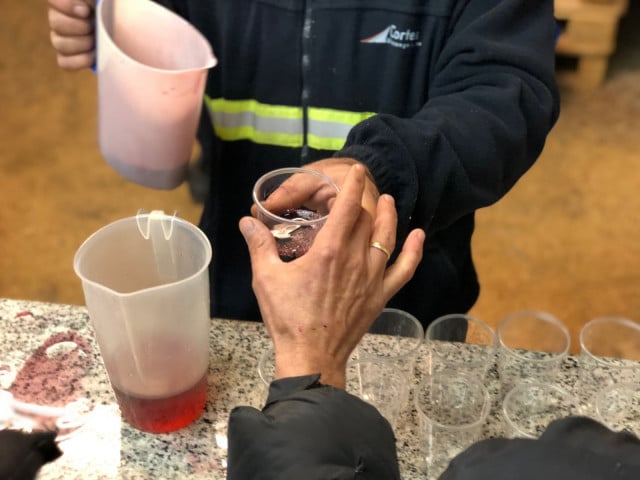
I read in the programme that the priest Don Francisco would bless the nuts and wine and then the sacks are carried up to the second floor of the Town Hall and would be chucked down from above onto the crowd. I was fortunate enough to procure an invitation to witness the whole thing from the Town Hall with the local dignitaries.
READ ALSO:
- WATCH: Paraded alive in coffins? This has to be Spain’s strangest fiesta
- Quiz: How well do you know Spain’s fiestas?
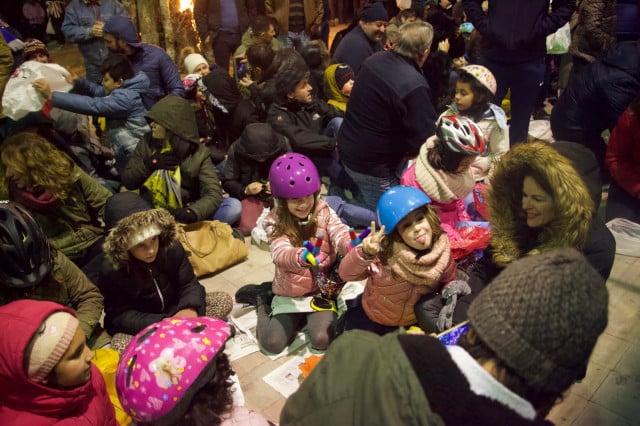
As we walked through the plaza towards the Town Hall, the crowds were also flowing in, carrying bags and many, if not most, of the kids were wearing bike helmets. None of the adults wore protective gear.
The children and adults jostled for space and kneeled on the ground facing the Town Hall balconies waiting for it to rain walnuts down upon them. There was a massive bonfire in the middle of the square and kids danced around it throwing pine cones. The energy was fizzing.
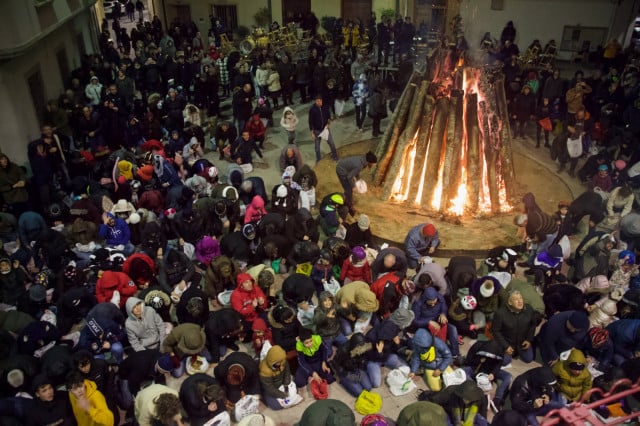
I made my way up to the reception for the organizers of the party and other local administrators. There was a room off to the side with all the bags.
Each year, a different group of families gather the funds for the walnuts and wine and take turns thus organizing the festival. They then are the ones who get to actually throw them as well.
In the old days, someone explained, they just went door to door and collected the funds from everyone. You were not expected to donate if you were struggling financially but were still welcome to collect nuts and drink wine.
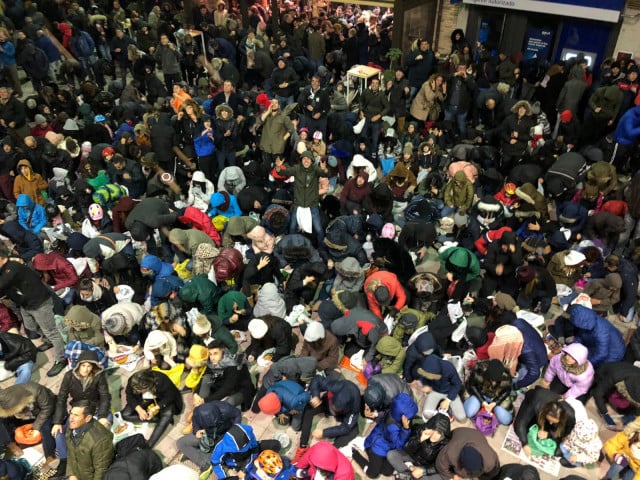
I was sadly not invited to throw any but I was allowed to stand on one of the balconies, squeezing in with the throwers, news cameras and other observers.
After a display of fireworks down by the river, it was time. The throwers had baskets they filled and carried to the balconies where they threw them by the handfuls while people screamed and called for more below.
The children scrambled to pick up as many as they could while they continued to get pelted from above. The chaos and fun went on as such for about 30 minutes until the nuts ran dry.
Before they finished throwing them all, I went downstairs into the plaza to experience having them hit me, which they certainly did. It did not hurt nearly as much as you would think. They boing and bounced off my winter coat and move slowly enough to keep off your face.
The nutty part was finished but the party was just starting. We pushed into the room where 250 litres of red wine and sherry were being poured into plastic cups.
It was so crowded we had to wait for quite a long time while being proactive about getting to the table of wine cups. I started to comment about how nice it is sometimes to have orderly lines at times like these like in some other countries and my Spanish companion reminded me “other countries” don’t have the imagination for an event like this, so take my free wine and be quiet. Good point.
We were well rewarded with a big full cup of really decent red wine and proceeded back to the bonfire, crunching as we crossed the piles of shells now covering the ground. People feasted on their nuts and drank the wine.
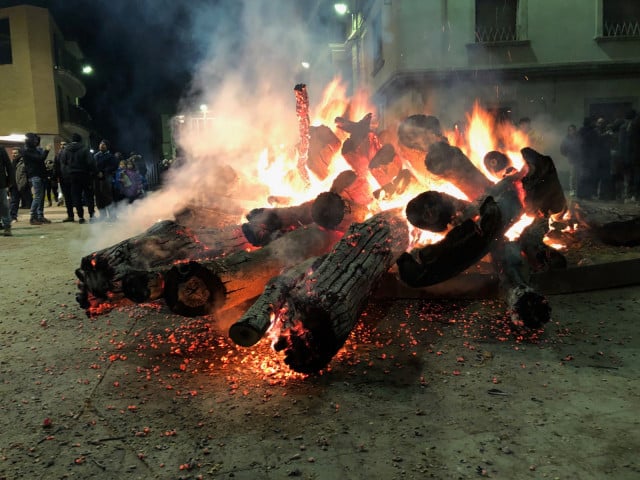
At this point the Fustiñana Band, made up of younger teens and adults, was playing rousing Navarran tunes by the bonfire and some people swayed around.
The fire was now roaring and reached heights of over 4 meters. There was still a lot of children playing around the fire when it suddenly, spectacularly collapsed and huge burning logs spilled out of the sandpit, scattering burning coal and branches over the plaza.
There was a lot of shrieking at the moment, of the kind you hear in other Spanish towns when a bull or cow sails over a barrier and scatters the onlookers in terror, but once it was seen that no child had been crushed or burned, everyone went right back to partying.
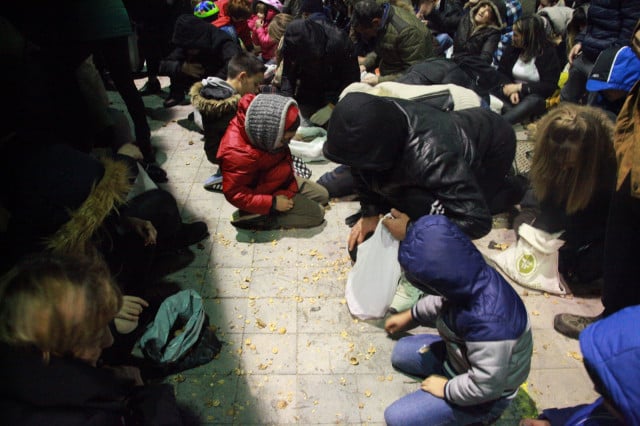
Traditionally the families would bring bread down to toast on the bonfire, doused in olive oil and fresh garlic. Nowadays, they bring their meat grills and set up a massive barbecue.
We went for dinner in the Old Folks Home nearby which hosts a large spread – we had our main courses at just about one o’clock in the morning, more wine, some delicious patxaran, and then back out to the plaza.
People were still grilling, piles of chorizo, steaks, and lots of this mouth-watering garlic toast. Despite having just eaten a three course meal, I gladly ate the bread and meat I was offered. I don’t know if it was the joy of the evening, but I had the best piece of chorizo I think I have ever had.
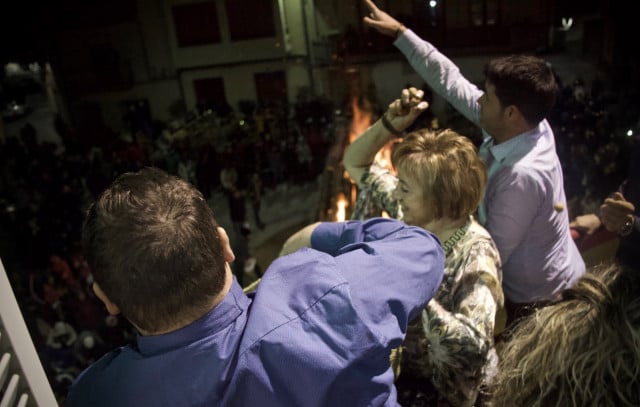
Our night was finished off back in Al Otro Lado De La Capilla, where we danced the night away. It was all us “old” people. The teenagers and young people had their own peñas they disappeared off to, away from their parents who were partying in the Capilla.
One of the main reasons I moved to Spain was to get to continually experience this kind of community and traditional festivity. And there’s no doubt, there are hundreds of festivals to choose from, each more colourful and bizarre than the next.
Article by Deirdre Carney
READ MORE:

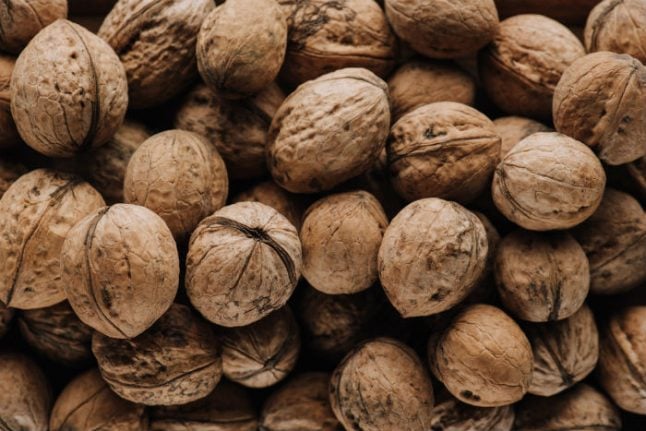
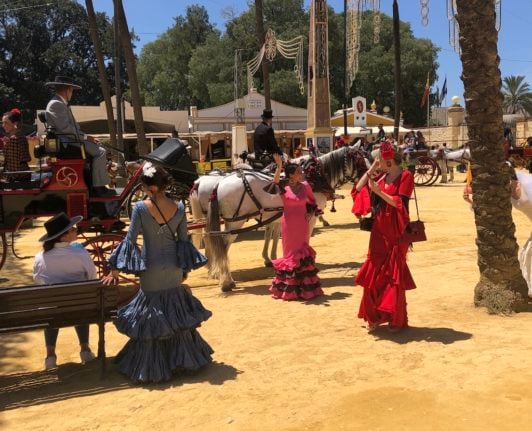




 Please whitelist us to continue reading.
Please whitelist us to continue reading.
Member comments